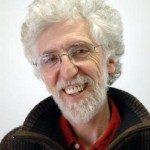Link to Pubmed [PMID] – 23698312
J. Virol. 2013 Aug;87(15):8419-28
Archaeal viruses display unusually high genetic and morphological diversity. Studies of these viruses proved to be instrumental for the expansion of knowledge on viral diversity and evolution. The Sulfolobus islandicus rod-shaped virus 2 (SIRV2) is a model to study virus-host interactions in Archaea. It is a lytic virus that exploits a unique egress mechanism based on the formation of remarkable pyramidal structures on the host cell envelope. Using whole-transcriptome sequencing, we present here a global map defining host and viral gene expression during the infection cycle of SIRV2 in its hyperthermophilic host S. islandicus LAL14/1. This information was used, in combination with a yeast two-hybrid analysis of SIRV2 protein interactions, to advance current understanding of viral gene functions. As a consequence of SIRV2 infection, transcription of more than one-third of S. islandicus genes was differentially regulated. While expression of genes involved in cell division decreased, those genes playing a role in antiviral defense were activated on a large scale. Expression of genes belonging to toxin-antitoxin and clustered regularly interspaced short palindromic repeat (CRISPR)-Cas systems was specifically pronounced. The observed different degree of activation of various CRISPR-Cas systems highlights the specialized functions they perform. The information on individual gene expression and activation of antiviral defense systems is expected to aid future studies aimed at detailed understanding of the functions and interplay of these systems in vivo.







